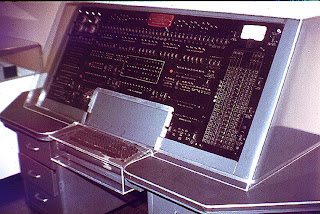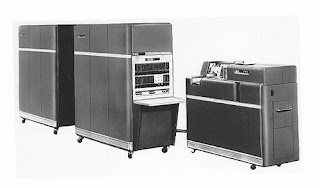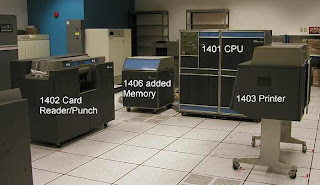History of Computers
The history of automatic data
processing begins with Charles Babbage’s attempt to build an automatic
mechanical calculator at Cambridge, England, in 1830. In 1930’s punched cards
were in wide use in large businesses. In 1937 Howard Aiken, at Harwad, proposed
IBM that a machine could be constructed to automatically sequence the
operations and calculations performed. This machine used combination of
electromechanical devices, including relays (mercury delay lines)
First
Generation Computers
Ø UNIVAC (Universal Automatic Computer) marks the beginning of the first
generation of electrical computers.
Ø 1st generation computers employed vacuum tubes.
Ø The input & output were punched card reader and the card punches.
Ø IBM-650 was the most popular 1st generation computer and was
introduced in 1950 with magnetic drum memory punched cards for input &
output.
Ø It was intended for both business & scientific applications.
Second Generation computers
Ø These computers employed germanium transistors & other solid state
devices.
Ø Their circuits were smaller than the vacuum tubes, & generated less
heat.
Ø 2nd generation computers required less power, were faster and
more reliable.
Ø IBM 1401 was the most popular second generation computer.
Third Generation computers
Ø 3rd generation of computers employed integrated
circuits in which all the elements of an electronic circuit are contained in a
tiny silicon wafer.
Ø 3rd generation computers are much cheaper
and more reliable than the 2nd generation computers.
Ø They are faster with more capacity & admit
connection of wide range of peripherals particularly magnetic disk units.
Ø 3rd generation computers can be used for
both scientific and business applications.
Ø 3rd generation computers permit
multi-programming, time sharing which is the use of the computer by several
customers at a time, operating systems.
Ø 3rd generation computers permit use of High
Level Languages (HLL) as FORTRAN 4 and COBOL 68.
Fourth generation computers
Ø 4th generation computers appeared in 1970’s.
Ø 4th generation computers employed large scale Integrated
Circuit (LSI), it is a small “chip” which contains thousands of small
electronic components which function as a complete system.
Ø A single chip may perform the function of the entire computer, calculator
or control device.
Ø In 1981 International Business Machine (IBM) made its first appearance in
the field of microcomputer with the announcement of the IBM Personal Computers.
The term Personal Computer captured the notion that an individual can have her
or his own computer. Instead of adopting 8-bit microprocessor, IBM selected
Intel 8088- a 16-bit microprocessor which made the IBM PC “an overnight
success”.
Ø In 1983, IBM’s first addition to the PC-family-XT model was introduced,
which added a high capacity hard disk storage facility to the PC.
Ø In 1984, IBM introduced two new high powered models viz 1. Compaq Desk Pro the 1st member of the PC family to have more basic computing power than the original
PC
2. IBM PC.
Ø The successor to the IBM PC, the IBM personal system/ 2, or IBM PS/ 2,
(introduced in 1987) have almost become a milestone in PC history.
Ø Introduced in 1982 the Commodore-64 was significant because it signaled
the buying public that powerful micros could be manufactured and sold at
reasonable cost $599.
Ø In 1984, Apple Computer introduced the Macintosh with a very “friendly”
graphical user interface.
Ø The second decade of 4th generation computers observed a great
increase in the speed of the microprocessors and the main memory.
Ø In 1995, the most popular CPUs were Pentium, Power PC. Also RISC(Reduced
Instruction Set Computers) microprocessors are preferred in powerful servers for
numeric computing and file services.
Ø The hard disks are also available of the sizes up to 20 GB. For large
disks RAID technology (Reduced Array of Inexpensive disks) gives storage up to
hundreds of GB. The CD-ROMs(Compact Disk Read Only Memory) are also becoming
popular day by day.
Fifth generation of computers
Ø Defining the 5th generation is somewhat difficult because the
field is in its infancy.
Ø The most of the 5th generation computer is the fictional
HAL9000 from Arthur. C. Clarke’s novel, 2001: A Space Odyssey.
Ø HAL performed all of the functions currently envisioned for real-life 5th
generation computers. With artificial intelligence, HAL could reason well
enough to hold conversations with its
human operators, use visual input, and learn from its ow experiences.




No comments:
Post a Comment